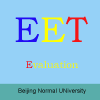-
California standards vs. ISTE standards
普通类 -
- 支持
- 批判
- 提问
- 解释
- 补充
- 删除
-
-
California standards vs. ISTE standards
BATTLING WITH STANDARDS appears to have avoided technology curriculum thus far, however where do technology teachers go from there? Technology curriculum is currently integrated, albeit sparingly, in the core curricula, while the other option available is to follow the more general National Educational Technology Standards (NETS).-
California State Standards
The state of California has provided content standards for English/Language Arts, Mathematics, History-Social Science, Science, English Language Development, and most recently Visual and Performing Arts. Technology standards are integrated in the middle school standards for Math, Language Arts, and Science only.
The California State Content Standards may be found on the California Department of Education Web site in HTML or PDF forms.-
ISTE Standards
ISTE is a nonprofit organization created for and by educators. The National Educational Technology Standards Project was an initiative of ISTE's and was funded by the U.S. Department of Education, the National Aeronautics and Space Administration; the Milken Exchange on Education Technology, and Apple Computer.
The National Educational Technology Standards for students were first published in June of 1998. The ISTE standards utilize performance indicators to break down their standards by grade level. The following performance indicators are for the 6-8 grade levels.-
ISTE Performance Indicators for grades 6-8
1. Apply strategies for identifying and solving routine hardware and software problems that occur during everyday use. (1)
2. Demonstrate knowledge of current changes in information technologies and the effect those changes have on the workplace and society. (2)
3. Exhibit legal and ethical behaviors when using information and technology, and discuss consequences of misuse.
4. Use content-specific tools, software, and simulations (e.g., environmental probes, graphing calculators, exploratory environments, Web tools) to support learning and research. (3,5)
5. Apply productivity/multimedia tools and peripherals to support personal productivity, group collaboration, and learning throughout the curriculum.
6. Design, develop, publish, and present products (e.g., Web pages, videotapes) using technology resources that demonstrate and communicate curriculum concepts to audiences inside and outside the classroom. (4,5,6)
7. Collaborate with peers, experts, and others using telecommunications and collaborative tools to investigate curriculum-related problems, issues, and information, and to develop solutions or products for audiences inside and outside the classroom. (4,5)
8. Select and use appropriate tools and technology resources to accomplish a variety of tasks and solve problems.
9. Demonstrate an understanding of concepts underlying hardware, software, and connectivity, and of practical applications to learning and problem solving. (1,6)
10. Research and evaluate the accuracy, relevance, appropriateness, comprehensiveness, and bias of electronic information sources concerning real-world problems. (2,5,6)-
California Technology Standards by Content
Science:
6th - Standard 7.b: Select and use appropriate tools and technology (including calculators, computers, balances, spring scales, microscopes, and binoculars) to perform tests, collect data, and display data
7th - Standard 7.b: Use a variety of print and electronic resources (including the World Wide Web) to collect information and evidence as part of a research project.
Language Arts: (Research and Technology Standards)
6th - Standard 1.4: Use organizational features of electronic text (e.g. bulletin boards, databases, keyword searches, e-mail addresses) to locate information
Standard 1.5: Compose documents with appropriate formatting by using word-processing skills and principles of design.
7th - Standard 1.5: Give credit for both quoted and paraphrased information in a bibliography by using a consistent and sanctioned format and methodology for citations.
Standard 1.6: Create documents by using word-processing skills and publishing programs; develop simple databases and spreadsheets to manage information and prepare reports.
8th - Standard 1.4: Plan and conduct multiple-step information searches by using computer networks and modems.
Mathematics:
6th - Standard 1.4: Solve problems manually by using the correct order of operations or by using a scientific calculator.
Standard 2.0: Students use data samples of a population and describe the characteristics and limitations of the samples.
Standard 2.4: USe a variety of methods, such as words, numbers, symbols, charts, graphs, tables, diagrams, and models to explain mathematical reasoning.
Flash animation of missing standards (above)-
Additional Resources:
National Educational Standards Project
California Content Standards
ISTE Lesson Plans-
Author
Mary Ann Hamre
Hamre, M. (2005). California standards vs. ISTE standards. In B. Hoffman (Ed.), Encyclopedia of Educational Technology. -
-
- 标签:
- standards
- standard
- educational
- national
- resources
- california
- iste
- information
- technology
- vs
- tools
-
加入的知识群:



学习元评论 (0条)
聪明如你,不妨在这 发表你的看法与心得 ~